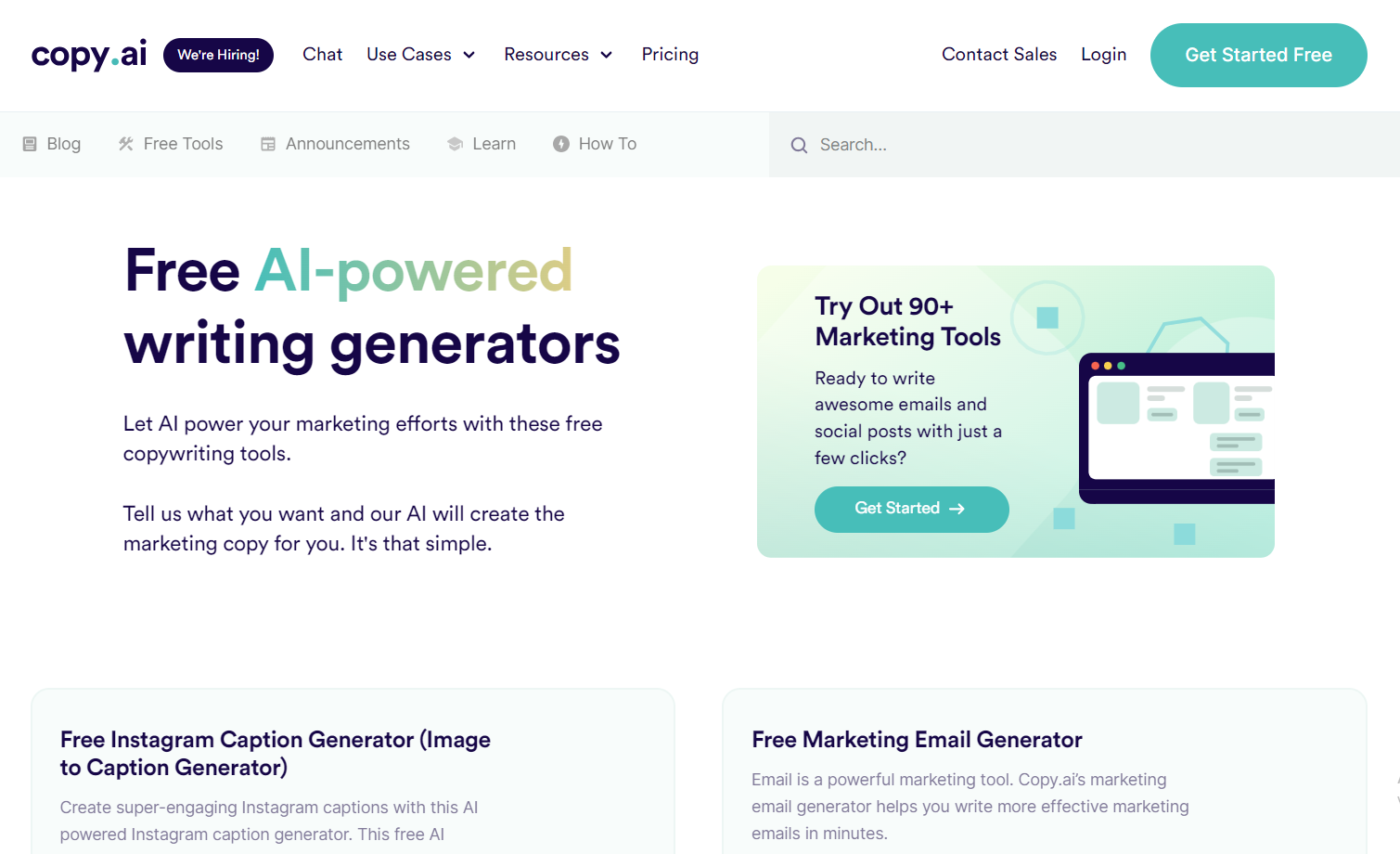If writer’s block has you staring at a blank page, your next burst of inspiration might be an app away.
With thousands of writing apps available, it can be challenging to know where to start. Whether you’re delving into the brainstorming phase or navigating the editing maze, we’ve handpicked the top free writing apps for designers, writers, and creatives. Follow our lead, and let these digital helpers guide you to writing success.
How do writing apps help?
Writers of all backgrounds and experience levels encounter creative challenges. Writing applications provide useful solutions for everyone, from professional writers and designers to individuals mastering a second language. These apps can transform time-consuming, poorly communicated projects into efficient, high-quality content, enhancing creativity and effectiveness.
Writing apps can improve your writing process by:
- Speeding up processes
- Improving your designs
- Communicating designs effectively
- Diversifying your services
Speed up processes
Writing apps using generative AI produce large volumes of content quickly. While the initial output might not be perfect, it’s an excellent starting point. Using generative AI can provide inspiration and reduce the time and effort you need to transform a blank canvas into a polished product.
Improve your designs
Effective writing refines designs. Crisp, error-free copy, whether on a website or in a brochure, builds reader trust and boosts conversions. You can leverage writing apps to refine microcopy and UX writing elements, including headlines and calls-to-action (CTAs) — all while ensuring more inclusive language. These apps can help you avoid common SEO writing mistakes and communicate more effectively with your audience, aligning written content with visual elements for a cohesive and user-friendly experience.
Communicate designs effectively
Using writing apps can sharpen design communication by guiding clear and persuasive articulation and enhancing content and presentation. This articulation adds value to tasks like presenting your design portfolio, collaborating on projects, or offering insights to those seeking advice. While they’re not a replacement for comprehensive written communication training, these apps offer valuable tools to help designers communicate more effectively.
Diversify your services
Integrating writing services into your offerings can expand your creative reach. For example, leveraging tools like Copy.ai can empower web designers to craft marketing materials as part of a comprehensive design and marketing package. Alternatively, they could use app-generated blog post ideas as part of a content marketing and search engine optimization (SEO) strategy.
7 types of free writing apps for each stage of your project
Today, various free writing software are available, each offering tools to support every aspect of the writing process, including research management, idea generation, writing, editing, and time organization.
Here are our top picks for the best writing apps. Our curated list includes a variety of tools, both AI-powered and traditional. Some of these offer a “freemium” model, providing basic options for free with optional paid plans for more advanced features, while others are completely free to use.
1. Research: Google Keep

If you enjoy having multiple browser tabs open simultaneously, consider using Google Keep to manage everything. With Keep, you can save essential websites, notes, drawings, and images all in one spot. Rearranging your notes is simple with a drag-and-drop feature. Available as a Chrome extension and a mobile app for Android and iOS, Keep offers a practical way to organize your research — like a collection of digital Post-It notes.
Pricing: This app is completely free.
Pros
- Helps you easily keep track of links, notes, and images.
- Integrates with Google’s products for seamless use.
Cons
- Doesn’t offer robust collaboration features.
- Lacks advanced text formatting tools.
2. Ideas: Ahrefs Content Idea Generator

The Ahrefs AI-backed Content Idea Generator is a powerful ally in conquering writer’s block. Designed with bloggers in mind, it refines broad topics into focused articles by suggesting different approaches to content. You control the register (formal, casual, professional, creative, academic, or simplified), the language, and the output length. Ahrefs also includes free complementary tools: an SEO-optimized title generator and a meta description generator for improved online visibility.
Pricing: The content idea generator is included in Ahrefs’ free marketing tool set, along with an alt text generator, a title generator, and a meta description generator. Full Ahrefs packages, which include SEO and other website tools, range from $99/month (Lite) to $999/month (Enterprise).
Pros
- Quickly solves writer's block with fresh ideas.
- Offers additional free tools for SEO titles and meta descriptions.
Cons
- Primarily focuses on blog content creation.
- Full SEO suite can get pricey for advanced features.
3. Writing short-form copy: Copy.ai

Copy.ai harnesses AI to create marketing materials, including social media posts and captions, marketing emails, digital ads, product descriptions, website copy, and blog posts. It’s perfect for designers looking to market their services or those wanting to offer marketing materials to clients. You can tailor the output to your brand voice by choosing a writing style — such as friendly, witty, or empathetic — or uploading existing content so the software can analyze and recreate it in your style.
Pricing: The free plan covers one user seat and up to 2,000 words. The Pro plan, which offers unlimited words and five user seats, costs $49/month.
Pros
- Generates social media copy and ads quickly.
- Lets you define your brand voice for a consistent style.
Cons
- Free plan's word limit might be too small for bigger projects.
- Sometimes repeats itself, so manual edits are needed.



















Build your online portfolio
Build and visually design a full portfolio website in just 21 days — with our free online course.
4. Writing long-form pieces: FocusWriter

While many AI-based apps can produce long-form pieces, they often exhibit inaccuracies and lack nuance. The depth and originality of human voices remain unmatched. Professionals — from writers to designers— benefit from distraction-free environments to boost productivity. Desktop apps like FocusWriter minimize digital interruptions, provide daily goals, offer adjustable themes, and even typewriter sounds for an authentic writing experience.
Pricing: This app is completely free (although donations are welcome).
Pros
- Blocks distractions so you can concentrate on writing.
- Customization options like themes and daily goals boost motivation.
Cons
- Lacks AI-based idea generation tools.
- Syncing across devices can be challenging.
5. Editing: Grammarly

Grammarly needs little introduction: around 30 million people and 50,000 teams rely on it daily for editing and proofreading. Grammarly’s free version includes grammar, spelling, passive voice, and tone checking, as well as suggestions for decreasing wordiness and increasing clarity. The paid version offers more advanced functionality like plagiarism checking and suggestions to improve readability, tone, and formatting. You can access Grammarly through various platforms, includingdesktop apps for Windows and Mac, browser extensions for Chrome, Safari, and other browsers, a Microsoft Word plugin, and a specialized mobile device keyboard.
Pricing: The Premium plan costs $12/month, and the Business plan (which includes functionality for teams) costs $15 per member/month.
Pros
- Provides clear grammar and spelling suggestions.
- Integrates seamlessly with multiple platforms and software.
Cons
- Advanced features can be expensive for casual users.
- Contextual or stylistic choices sometimes get flagged incorrectly.
6. Sharing

If you’re part of a collaborative writing team, Bit.ai can simplify the sharing process. This user-friendly platform organizes collections of documents, linked websites, and other resources intuitively. Pre-made templates enable you to effortlessly present and share documents within your team or with clients. The entire collection remains searchable, and embedding videos, spreadsheets, and other materials in document drafts is a breeze. Bit.ai offers a free limited plan for small teams, monthly pro and business subscriptions, and special pricing for education, non-profit, and startup organizations.
Pricing: The Pro plan costs $8 per member/month, and the Business plan costs $15 per member/month.
Pros
- Makes it easy to share and organize different media in one place.
- Ideal for small teams that need a straightforward collaboration tool.
Cons
- Free plan restricts storage and advanced features.
- May not integrate smoothly with every external app.
7. Time management: Pacemaker Planner

Great writers weave writing into their daily routines, refining their craft over time. The Pacemaker Planner app removes logistical hurdles by letting you shape writing goals around your schedule. You can specify a word count target and track progress with graphs and tables. Adding daily notes helps you spot trends, so you know when you write most effectively.
For the fiercely committed, a “No Excuses” feature holds you accountable by automatically charging $10 for each planned workday you skip. The free version limits you to two plans, which is ideal for a thesis, dissertation, or even daily blog posts grouped into one larger project.
Pricing: The Premium Lite plan costs $5/month or $55/year (and includes five-year-long plans and email reminders). The Premium Pro plan costs $8/month or $72/year (and includes unlimited plans, time tracking, and high-level organization options).
Pros
- Visual progress tracking helps you see your achievements at a glance.
- Flexible setting ensures you can adapt writing goals to your schedule.
Cons
- Daily accountability can get expensive if you frequently skip writing days.
- Free version may be too limited for multiple or long-term projects.
Transform your content with the right tools
Writing apps can’t run the race for you, but they can give you a head start. Journalist Gene Fowler once wrote: “Writing is easy. All you do is stare at a blank sheet of paper until drops of blood form on your forehead.”
It’s time to let your writing shine. Check out Webflow University to learn how to publish your work without coding.

Get started for free
Create custom, scalable websites — without writing code. Start building in Webflow.































